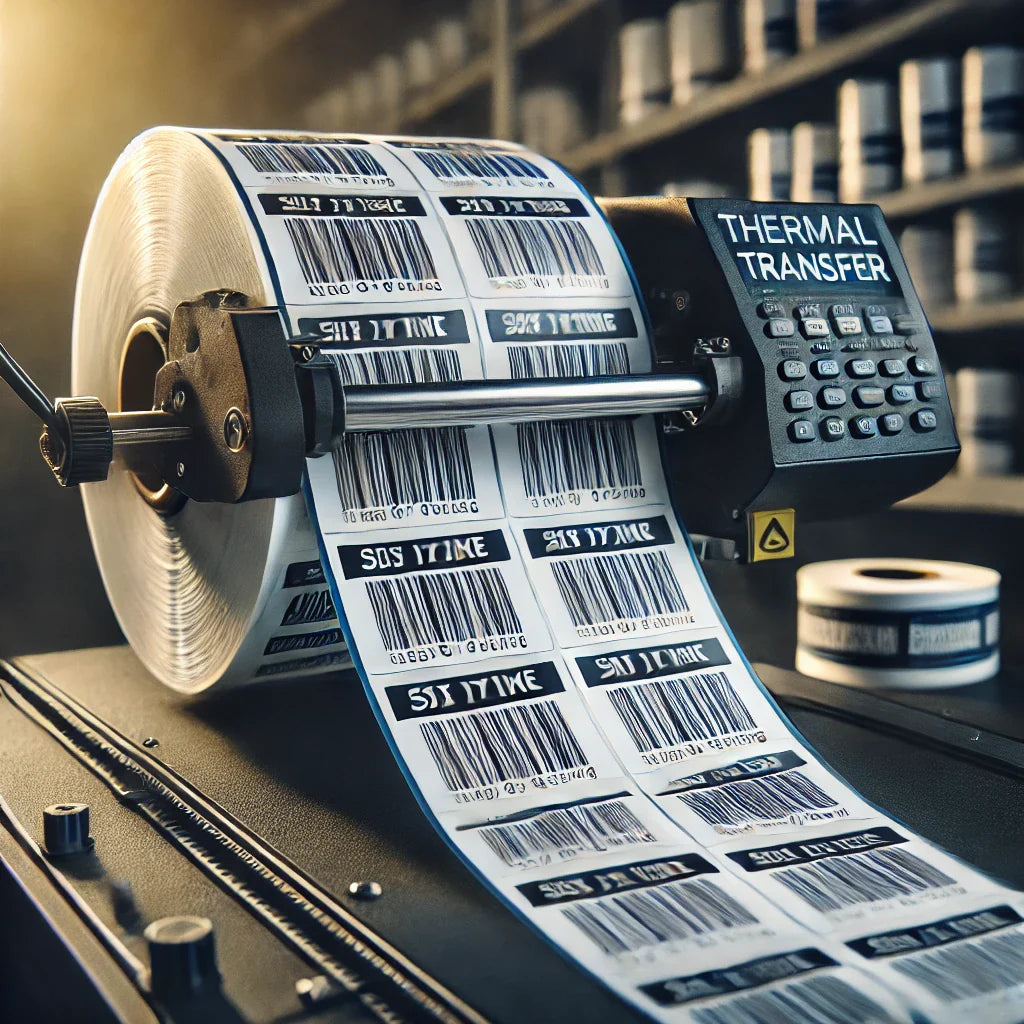In the world of label printing, achieving durable and high-quality results is a priority for businesses in retail, logistics, healthcare, and more. Thermal transfer ribbons play a critical role in ensuring that printed labels are clear, long-lasting, and resistant to environmental challenges.
Whether you’re using thermal transfer printing ribbons for shipping labels, inventory management, or industrial applications, understanding how they work and why they’re essential can help you make the most of your thermal printer.
1. What Are Thermal Transfer Ribbons?
Thermal transfer ribbons are rolls of coated material used in thermal transfer printers to produce high-quality prints. These ribbons transfer ink to a substrate (like paper or synthetic labels) through heat, resulting in sharp, durable images and text.
Commonly paired with 4x6 label paper, thermal transfer printer ribbons are essential for applications requiring long-lasting and professional-looking prints.
2. Types of Thermal Transfer Ribbons
Different types of thermal transfer ribbons cater to various printing needs. The most common categories are:
a. Wax Ribbons
-
Ideal for printing on paper labels.
-
Cost-effective but less durable compared to other types.
-
Best for indoor use or applications with minimal handling.
b. Wax-Resin Ribbons
-
A blend of wax and resin for enhanced durability.
-
Suitable for both paper and synthetic labels.
-
Resistant to smudging and light exposure, making them great for industrial thermal transfer ribbons applications.
c. Resin Ribbons
-
The most durable option.
-
Designed for synthetic materials and labels exposed to extreme conditions.
-
Resistant to chemicals, moisture, and high temperatures.
3. How Thermal Transfer Ribbons Work
The process behind thermal transfer printing ribbons is straightforward:
-
The printer heats the ribbon, causing the ink to melt and transfer to the label surface.
-
The result is a crisp, high-resolution print that adheres firmly to the label.
-
Depending on the ribbon type, the print can withstand heat, moisture, and abrasion.
This technology makes thermal transfer ribbons a reliable choice for businesses requiring long-lasting labels.
4. Benefits of Using Thermal Transfer Ribbons
a. Long-Lasting Prints
Unlike direct thermal printing, which fades over time, thermal transfer ribbons produce prints that are resistant to wear, fading, and environmental damage.
b. Versatility
From ribbon for thermal printers to heat transfer ribbons, these ribbons work with various label materials, including paper, polyester, and polypropylene.
c. High Print Quality
The heat-activated transfer process ensures sharp, smudge-free text and barcodes, making it ideal for shipping labels, product tags, and industrial applications.
d. Compatibility
With a wide range of thermal ribbon manufacturers and suppliers, businesses can find ribbons tailored to their specific printers and needs.
5. Applications of Thermal Transfer Ribbons
a. Retail and E-Commerce
-
Use thermal transfer printing ribbons for clear, professional-looking price tags and shipping labels.
b. Logistics and Warehousing
-
Print durable barcodes and inventory labels that withstand heavy handling and environmental exposure.
c. Healthcare and Pharmaceuticals
-
Ensure accurate, smudge-proof patient records and medication labels with thermal printer ribbons.
d. Industrial Use
-
Create labels for harsh conditions using industrial thermal transfer ribbons that resist chemicals and extreme temperatures.
6. Tips for Choosing the Right Thermal Transfer Ribbon
a. Match the Ribbon to the Material
-
For paper labels, opt for wax ribbons.
-
For synthetic labels, choose wax-resin or resin ribbons for added durability.
b. Consider Your Application
-
Determine if the labels will be exposed to heat, moisture, or chemicals and select a ribbon accordingly.
c. Buy from Reliable Suppliers
-
Purchase from trusted thermal ribbon manufacturers or thermal transfer ribbon suppliers to ensure consistent quality.
d. Printer Compatibility
-
Confirm that the ribbon is compatible with your thermal printer model to avoid printing issues.
7. Sustainability in Thermal Transfer Printing
As businesses prioritize eco-friendly practices, many thermal transfer ribbon manufacturers offer sustainable options, such as ribbons with reduced waste cores or recyclable components. By choosing such products, you can enhance your printing process while reducing your environmental impact.
Conclusion
Thermal transfer ribbons are an essential tool for achieving durable, high-quality prints in a variety of applications. From heat transfer ribbons for industrial labels to thermal transfer printing ribbons for retail and logistics, these products ensure reliable and professional results.
By selecting the right ribbon for your needs and partnering with trusted thermal ribbon suppliers, you can optimize your printing process and produce labels that stand the test of time.
Ready to upgrade your printing setup? Explore premium thermal transfer ribbons today and experience the difference in quality and durability.

